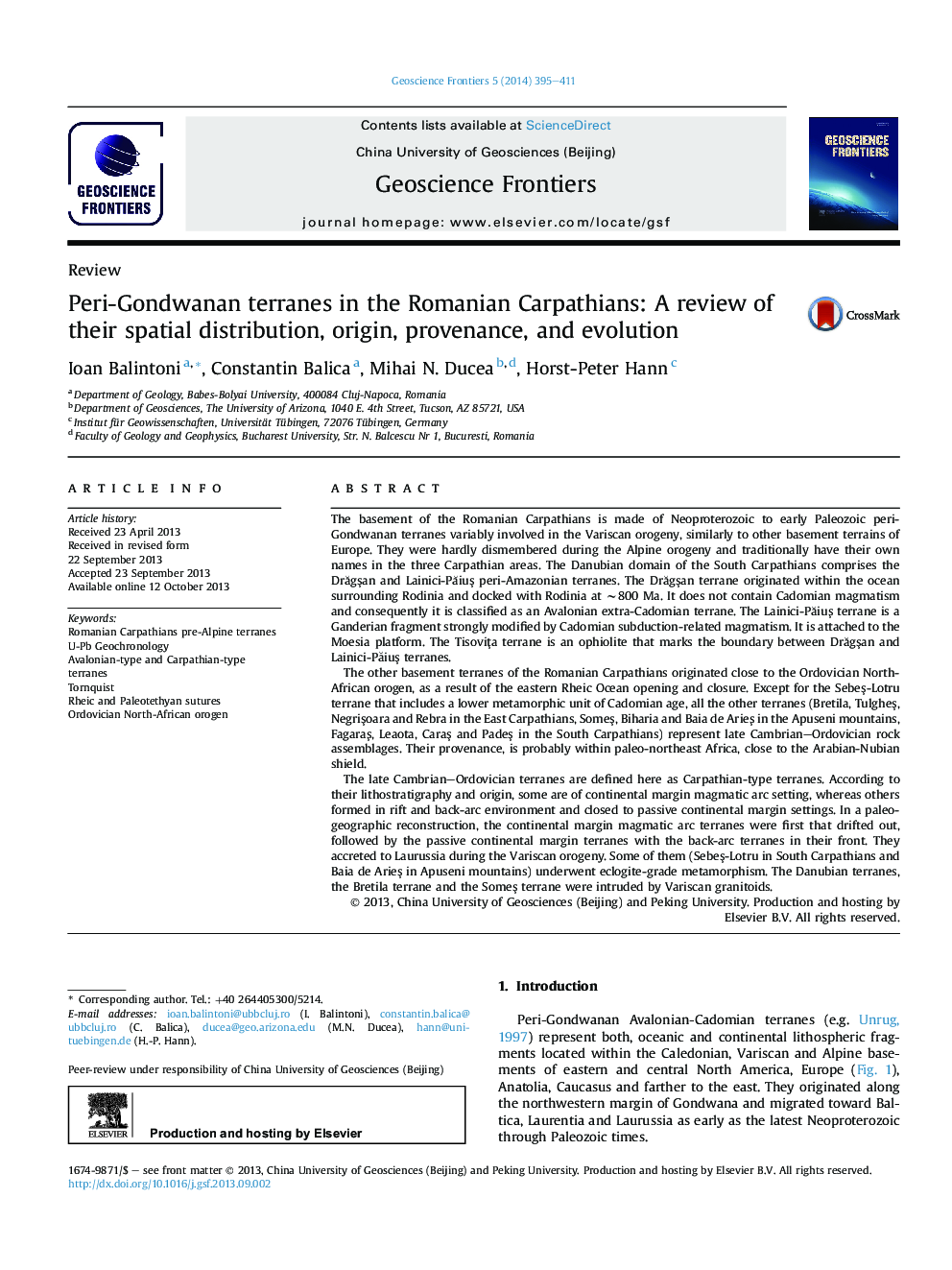| Article ID | Journal | Published Year | Pages | File Type |
|---|---|---|---|---|
| 4681582 | Geoscience Frontiers | 2014 | 17 Pages |
•Peri-Gondwanan terranes in the Romanian Carpathians: Avalonian and Carpathian types.•Eastern Rheic aborted branch: the locus of the Ordovician, North African orogen.•Rheic and Paleotethys sutures in the Romanian Carpathians.•Variscan Plate tectonics in the Romanian Carpathians: eclogites and granitoids.
The basement of the Romanian Carpathians is made of Neoproterozoic to early Paleozoic peri-Gondwanan terranes variably involved in the Variscan orogeny, similarly to other basement terrains of Europe. They were hardly dismembered during the Alpine orogeny and traditionally have their own names in the three Carpathian areas. The Danubian domain of the South Carpathians comprises the Drăgşan and Lainici-Păiuş peri-Amazonian terranes. The Drăgşan terrane originated within the ocean surrounding Rodinia and docked with Rodinia at ∼800 Ma. It does not contain Cadomian magmatism and consequently it is classified as an Avalonian extra-Cadomian terrane. The Lainici-Păiuş terrane is a Ganderian fragment strongly modified by Cadomian subduction-related magmatism. It is attached to the Moesia platform. The Tisoviţa terrane is an ophiolite that marks the boundary between Drăgşan and Lainici-Păiuş terranes.The other basement terranes of the Romanian Carpathians originated close to the Ordovician North-African orogen, as a result of the eastern Rheic Ocean opening and closure. Except for the Sebeş-Lotru terrane that includes a lower metamorphic unit of Cadomian age, all the other terranes (Bretila, Tulgheş, Negrişoara and Rebra in the East Carpathians, Someş, Biharia and Baia de Arieş in the Apuseni mountains, Fagaraş, Leaota, Caraş and Padeş in the South Carpathians) represent late Cambrian–Ordovician rock assemblages. Their provenance, is probably within paleo-northeast Africa, close to the Arabian-Nubian shield.The late Cambrian–Ordovician terranes are defined here as Carpathian-type terranes. According to their lithostratigraphy and origin, some are of continental margin magmatic arc setting, whereas others formed in rift and back-arc environment and closed to passive continental margin settings. In a paleogeographic reconstruction, the continental margin magmatic arc terranes were first that drifted out, followed by the passive continental margin terranes with the back-arc terranes in their front. They accreted to Laurussia during the Variscan orogeny. Some of them (Sebeş-Lotru in South Carpathians and Baia de Arieş in Apuseni mountains) underwent eclogite-grade metamorphism. The Danubian terranes, the Bretila terrane and the Someş terrane were intruded by Variscan granitoids.
Graphical abstractFigure optionsDownload full-size imageDownload as PowerPoint slide
